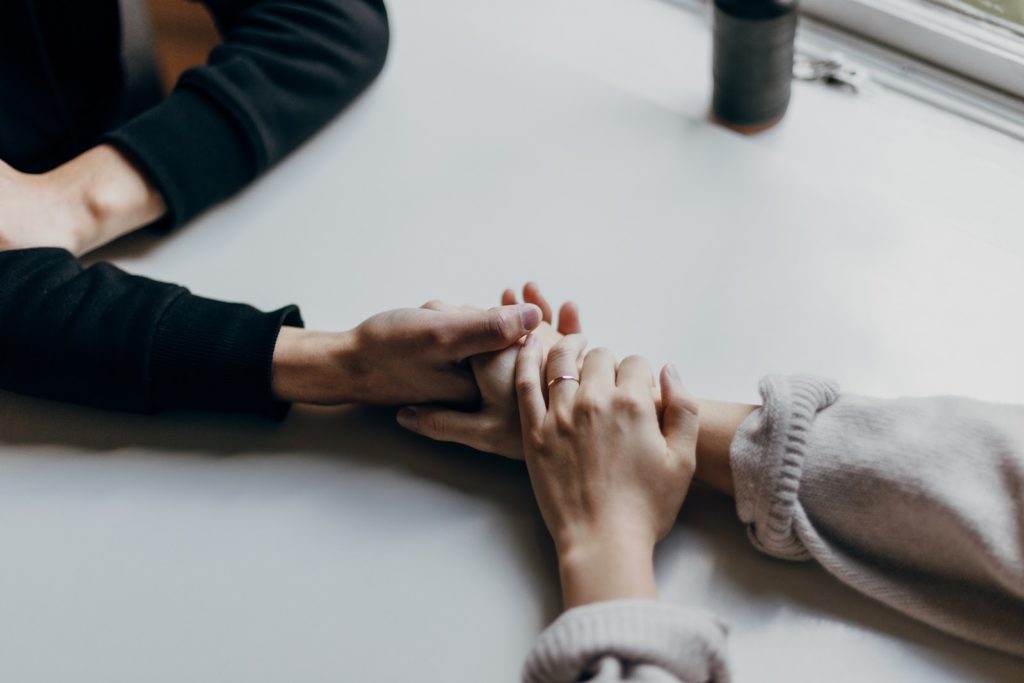For some couples physical interaction is sparse or non-existent, while others spend every day together.

When Olivia Pettinato and Lucas Restivo began dating in January 2020, they had no idea that soon they would be unable to see each other for months. While their relationship has continued throughout the pandemic, there hasn’t been much room for regular dates and hangouts.
Navigating their relationship solely through text and Facetime, the couple had to find unique ways to maintain their connection.
“It was little things like asking about their day or watching a movie where we could share our screens. Keeping connected always meant thinking about the other person,” Pettinato says.
Although the couple tried to find ways to stay connected virtually, they admit that constantly texting got a little tedious when they weren’t able to meet in person.
Nearly 1.5 million people aged 25 to 64 were in a relationship with someone living in a different home, according to a 2017 report issued by Statistics Canada. More than a year into the COVID-19 pandemic, as restrictions continue to fluctuate, there’s no guarantee when couples will be able to physically see each other again — especially those who live in different households.
The distance between Pettinato and her boyfriend feels immense, even though they only live 10 minutes away from each other, she says.
Maintaining an emotional connection was already difficult, but maintaining a sexual connection without physical intimacy became a challenge. The couple says they used sexting and other digital forms of intimacy to keep their sexual spark alive, instead of just trying to fill the sexual void with emotional connection.
Lindsay Ellis, a registered psychotherapist, is the only therapist at her practice offering couple’s therapy due to the pandemic, as many couples therapists find video calls a barrier to the process.
Ellis believes that the pandemic has made some couples bring up issues within their relationships earlier than they might have otherwise. She says that this is healthy, as couples usually come to therapy as a last resort.
Though the problems most couples have faced during the pandemic have not changed, Ellis says, the context of these problems has. According to her, the implications of couples being apart due to COVID-19 restrictions links back to attachment theory.
“When we feel physically or emotionally threatened, and certainly the pandemic is a threatening experience, our instinct is to connect with others. To not have access to the people you’re attached to is really bad from a psychological perspective,” she says.
The pandemic might have translated to more time that can be spent with our partners, but it’s still a “very stressful situation,” she says. “It equalizes a lot of our energy and we may not feel like always being physically intimate with each other, and we may not have as much to give each other as we think we should. So, just being really kind and gentle to ourselves is very important.”
For Ashley and Alessandro Petrillo, prioritizing their relationship during the pandemic is sometimes as simple as cooking a meal together.
“We cook a lot together… drink some wine,” says Alessandro. Since the married couple doesn’t get a chance to go on dates very often, they also find connection by playing video games together and going on walks.
The Petrillos have been married for almost two years. Last October, they moved out of Ashley’s family home and into their own apartment. They say the pandemic has been great for their relationship, as they are both introverts who call each other best friends.
Pandemic or not, Ellis says one of the best ways for couples to maintain the quality of their relationships is through communication. She says taking time to converse and check in with your partner every couple of days is extremely important.
Ashley Petrillo agrees, saying communication in her relationship is crucial. “We’re really transparent. Sometimes we’ll just be like ‘I just want to play my game by myself right now, or read a book by myself.”
The Centre for Addiction and Mental Health (CAHM) reported that 50 per cent of Canadians have experience worsening mental health during the pandemic.
For the Petrillos, small acts of kindness like picking up a little gift or a favourite snack for the other on a bad day are ways they show their care and support.
“In most relationships we are basically asking ‘Are you there for me?’ and hoping that the answer is ‘Yes’,” Ellis says. She also notes that what emotional safety looks like varies from person to person, so clearly defining what each other’s needs look like is the best way for a couple to act on these needs proactively.
On an everyday level, emotional needs can be expressed in a number of small ways, Ellis says. For example, some may feel emotional closeness when their partner brings them coffee every morning, while others may want their partner to listen to them at the end of the day.
“If your partner is grumpy one day or being short, just give them the space and don’t take it too personally, it’s just the way it is right now,” says Alessandro. He stresses that he’d rather focus on bigger things, like just how lucky he is to have Ashley by his side during the pandemic.
In the same vein, Ellis reminds people to be patient with their partners, as these are unchartered waters for everyone.
“We might all be in the same storm, but we’re not all in the same boat.”
